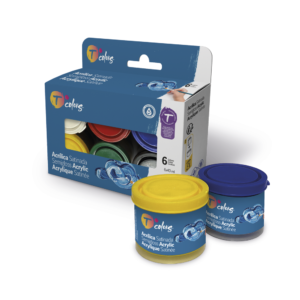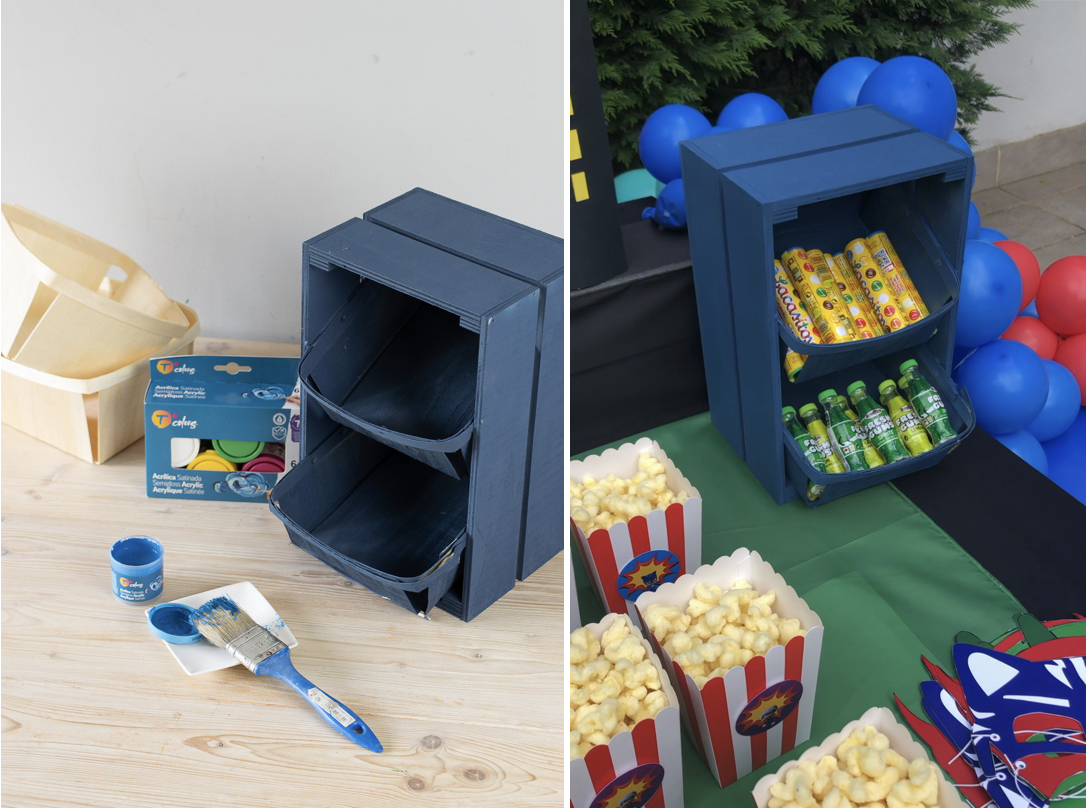The versatility and beauty of Tcolors Acrylics have captivated artists from all over. Tcolors, the paint that changes everything, is created by combining pigments with water-soluble synthetic resins, resulting in a mixture that easily dilutes.
Quick drying is its distinctive feature. The term “Tcolors acrylics” is often confused to describe any paint where pigment is bound to a synthetic resin, whether it’s acrylic or polyvinyl acetate. In the case of the latter, the proper designation would be “vinyl.”
Here are 10 essential tips for working effectively with Tcolors Acrylics:
First Tip: Brush Selection
Both natural bristle and synthetic brushes are suitable for working with Tcolors Acrylics. Both types come in round, flat, and filbert (rounded tip) versions.
Experiment with brush shapes to achieve various effects in your Tcolors Acrylic painting. Experiment with brush shapes to achieve various effects in your Tcolors Acrylic painting. The brush configuration will have a significant impact on the appearance of the painting when applied to the canvas. Make sure you have a variety of brushes on hand to easily add different nuances and details. For example, you can consider the following: – Use round brushes for outlining and adding details. – Use flat brushes for bold, sweeping strokes and for filling in large areas. – Fan brushes are ideal for blending and softening colors. – Angular flat brushes are useful for filling corners and creating fine details. The choice between them depends on the paint load and detail capability. Use natural bristle brushes for larger surfaces and synthetic brushes for fine strokes and details. Use wide, flat brushes to outline the shapes of the subject. Begin your Tcolors Acrylic painting by outlining approximate shapes of the elements present in the image.
For example, if you’re painting a mountain panorama, start by outlining the prominent peaks.
If you’re working on a large canvas, consider leaving the base color once you’ve completed the outlines and add the details later in the process.
It can be beneficial to use opaque Tcolors Acrylic paint when sketching the outlines. Later, when adding details to the painting, you can use more transparent colors or dilute the paint with water or an appropriate medium. Use smaller brushes to incorporate precise elements into the artwork. Once the primary shapes of the painting are complete, turn to smaller brushes to add meticulousness. Use them to infuse touches of detail, such as delicate lines or textures. Experiment with different fine-tip brushes to create lines of varying thickness and produce visual effects on the canvas. For example, after outlining the prominent mountain peaks, proceed to detail (such as individual trees, a lake, or people camping on the shore) using small, pointed brushes.
Second Tip: Always Have Clean Water Handy
If you want crisp and vibrant colors in your Tcolors Acrylic paintings, have two containers of clean water at hand. One for cleaning the brush and removing residues from the previous mixture, and another for wetting it before mixing the next color. Change the water in the first container when it gets dirty.
Second Tip: Always Have Clean Water Handy
Explore various supports for your artwork: untreated gray board, prepared gray board, prepared cotton canvas, stretched canvas, wood, “upcycled” reclaimed materials. Preparing the supports may involve cleaning and sometimes light sanding.
Fourth Tip: Match Palette and Brush Size to the Support
The size of the palette and brushes should match the support. For larger canvases, use a spacious palette and proportional brushes.
Fifth Tip: Plastic Palettes for Acrylics
White plastic palettes are preferred for acrylics because they allow for better color perception. Since acrylics dry quickly, store excess paint in airtight containers for preservation.
Sixth Tip: Organize Your Palette
Establish an order on your palette to streamline your work. As you become accustomed, your brushes will easily find the Acrylics Tcolors.
Choose between 4 and 6 colors and squeeze a small amount of each onto a palette. Less is more when it comes to acrylic painting, so only squeeze a small blob of each color to start with.
This will prevent the colors from drying out before you use them, and there will be enough left in the tube to add more when needed. Space the colors around the perimeter of the palette so you can use the center to mix different shades.
 Try starting with the three primary colors (red, blue, and yellow), plus white and black.
Try starting with the three primary colors (red, blue, and yellow), plus white and black.- Alternatively, if you prefer a more natural palette, you could start with white, yellow, red, brown, and blue.
Yes, mix paints on the palette to create new shades. If you want to refine your selection of Tcolors Acrylic colors, take two pinches of different colors to the center of the palette and mix them with a knife or brush. Color theory will help you create intense shades and give your painting a personalized look.
- Mix a color with a little white paint to lighten it without changing its opacity. Similarly, create a darker color by mixing it with dark blue or brown.
- Try working with a quick mixing technique, as acrylic paints dry quickly. For example, if you look at a color wheel, you will see that when you mix red and yellow, you will get a bright orange.
- Work quickly when mixing, as acrylic paints dry quickly.
Seventh tip Thickening Gel for Body:
Acrílicos tend to have less body than oil paints, but you can correct this with body thickening gels. Adding them to your mixes will increase the consistency and texture of the paint.
Eighth Tip: Control Drying for Blending
If you like to create blends or gradients, you need to work quickly due to the fast drying nature of acrylics. A touch of drying retarder in your mixes will give you more time to achieve those smooth effects.
Ninth Tip: Ensure a Wet Brush Before Applying Acrylic Paint
Opt for a slightly moist brush to achieve even coverage on the canvas. Most of the time, your tool of choice for working with Tcolors Acrylic paint will be a slightly dampened brush By doing so, you’ll allow the brush to glide smoothly over the canvas surface, ensuring that the paint is evenly distributed over the background. This technique is especially beneficial when dealing with large areas or working on dark backgrounds. Don’t forget to moisten the brush whenever you want to apply a solid color to the canvas. Explore the use of a dry brush to add texture and additional details to your work. When the brush is dry, it will create small jumps as you move it over the Tcolors Acrylic paint, producing an attractive granulated effect.
Therefore, this approach is ideal for parts of the artwork where you want to incorporate a textured touch or specific details. For example, you can use a dry brush to paint the ground of the painting and create the illusion of grass.
If you decide to use a dry brush, make sure to thoroughly dry it after rinsing it between colors to avoid unwanted mixing.
Tenth Tip: Layering with Tcolors Acrylic Paint
Is it possible to layer Tcolors Acrylic paints?
Yes, layering is recommended to create texture and depth in your artwork. When working with Tcolors Acrylic paints, it’s advisable to use a layered approach. This will allow you to add dimension, such as creating shadows and highlighting points of light on a tree using a variety of green shades.
It’s crucial to allow enough time for each layer of Tcolors Acrylic paint to dry before applying the next one. Thin layers will dry in about 30 minutes, while thicker ones will require more than an hour.
Start with dark colors and broad areas, then move on to lighter colors and details. When starting the painting, outline the contours, larger shapes, and shaded areas, if any. Use the darker colors from your palette initially, and as you add successive layers, gradually lighten the tones by including details, textures, and lighting. Tcolors Acrylic paints do not blend once they have dried.
If you start painting with light colors and then apply darker tones, it will allow the dark colors to cover the light paint instead of lightening it.
How to Create Texture with Tcolors Acrylic Paint?
Create texture by applying paint with a dampened brush to create dense color areas. Dampen a brush or a toothbrush by dipping it in water and then load the bristles with Tcolors Acrylic paints Firmly hold the brush in one hand and tap it just below the bristles with the other hand. The paint will project in thick drops that will adhere to the canvas.
This splattering method is especially useful for achieving an abstract effect in your artwork or for adding texture to the painting. Make sure to keep the brush about 2 to 3 inches away from the canvas to control the splatter area. If you prefer, you can use masking tape to define the areas you don’t want to splatter. Create a pattern of dots using paint on the canvas. To achieve this, cover the bristles of a brush with paint and then gently tap the brush tip against the canvas surface. This will create a dotting and fading effect. This method is particularly suitable for representing birds, animals, or giving a feathery texture to an abstract work. When dotting, avoid sliding the bristles along the canvas, as this would cause the dots to blend and spoil the effect. Another option is to create a bubble effect by dipping a sponge into paint and gently passing it over the canvas surface.
We hope these 10 tips inspire you to improve your skills and keep your ideas organized as you explore the exciting world of Tcolors the paint that change everithings Congratulations on your artistic journey!





